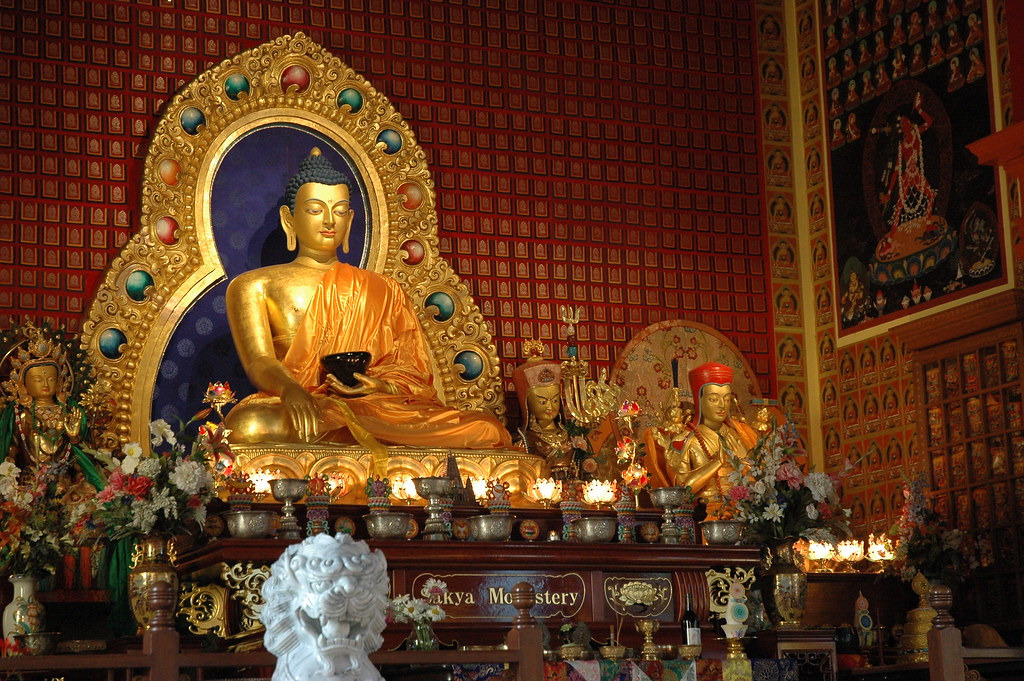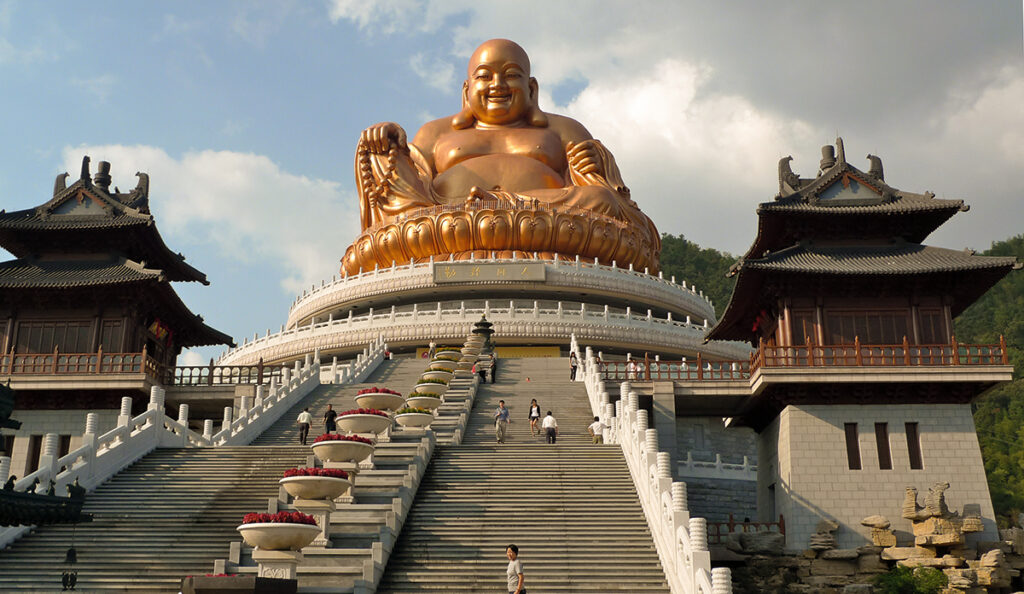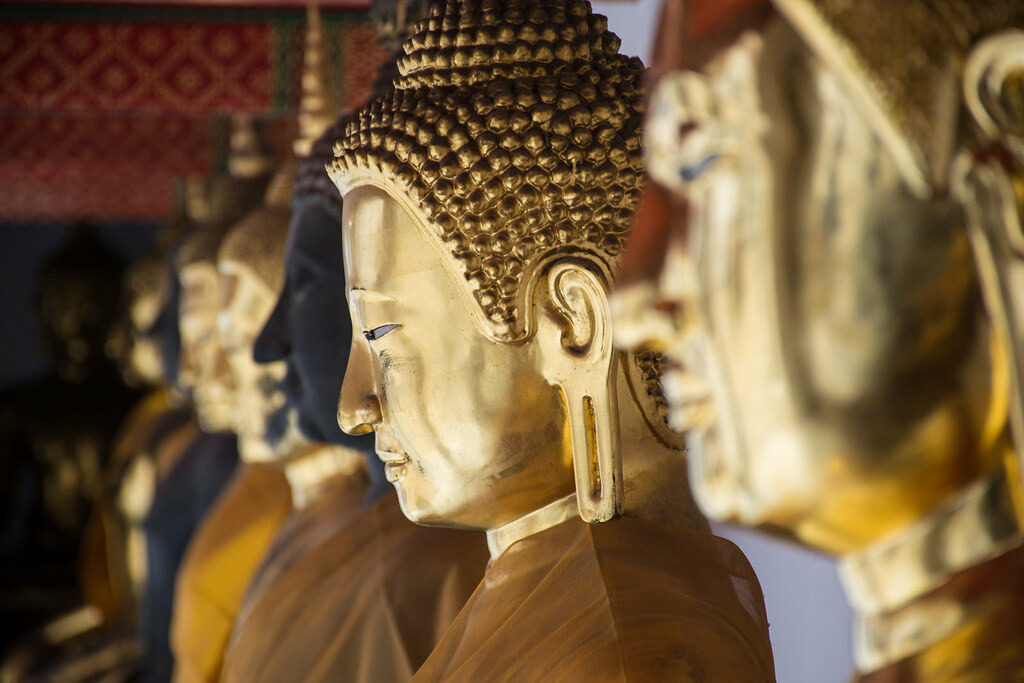A long time ago, in Theravada Buddhism, the term “Buddhas” was born with the meaning of efforts and wisdom that helped people become enlightened.
They are people who have escaped the vicious suffering cycle, and at the same time, they are also enlightened and end samsara.
So, how many Buddhas are there in the world? How many orthodox preachers have brought deliverance from death and suffering to all sentient beings?
Let’s discover the answer in this article.
How Many Buddhas In The World?
Buddhas not only appeared in the past but are also people from the future. Indeed, up to 28 Buddhas appeared in the formation and development.
This number is likely to increase shortly, and the 28 Buddhas include: Taṇhaṅkara; Medhaṅkara; Dīpankara; Sumana; Sujata; Piyadassi; Revata; Saraṇkara; Sobhita; Dhammadass; Anomadassi; Phaduma; Padumuttara; Koṇdañña; Maṅgala; Phussa; Narada; Sumedha; Attadassi; Gautama; Siddhattha; Tissa; Vipassi; Koṇāgamana; Sikh; Vessabhū; Kakusandha; and Kassapa.
At the request of God Brahma, these 28 Buddhas fulfilled their mission of preaching to their followers. Their names and physiques are preserved respectfully, along with their trees, countries, and parents.
In addition, auspicious Vesak celebrations are held every year in each country. During the ceremony, Buddhist followers will pay respect to the Enlightened One and teach them the Dharma in different eras.

Buddhism History Overview
Buddhism developed and lasted from the 5th century BC to the present. Beginning with Gautama’s death (circa 483 BC), his followers organized and launched a religious movement.
Accordingly, the Buddha’s teachings were born and became the basis for all that would develop into Buddhism after that.
Around the 3rd century BC, Ashoka, the emperor of India, decided to make Buddhism the state religion in their country. So they built Buddhist monasteries and encouraged the spread of this philosophy everywhere.
Not only in India, Buddhism also made great strides and spread to many neighboring countries in the next few centuries. Since believers’ interpretations differ, Buddhist thinking and philosophies have also gradually diversified.
If you are a Buddhist, you will probably know the event that the Huns invaded and destroyed monasteries in India in the 6th century BC.
These invaders were eventually quelled and driven out of the country.
What Role Does Buddhism Play In People’s Lives?
For each person, Buddhism plays a specific role in their life. Some people consider Buddhism a religion, but others consider it a philosophy.
Practicing this religion as a spiritual discipline still helps people experience inner peace. Buddhism becomes a beauty in the customs and practices of many people even though they do not consider themselves believers.
In addition to being known as a spiritual tradition, people consider Buddhism a healthy lifestyle wrapped in the mind. It has many excellent health and mental benefits, including reducing stress and anxiety. At the same time, it also helps people release thoughts that disturb the mood or are ineffective.
In general, Buddhism’s highest role in people’s lives is to help them understand and control their psychology and will to achieve enlightenment or nirvana. In other words, it directs one to happiness and peace.
Buddhism Types
Over the past several decades, Buddhism has spread in many countries worldwide. Today, Buddhism exists in many different forms, representing certain geographical areas. The three main types that are most conspicuous include:
- You will easily find this Theravada Buddhism in Thailand, Cambodia, Laos, Sri Lanka, and Burma.
- Mahayana Buddhism is in many areas, the most popular in China, Japan, Singapore, Korea, Taiwan, and Vietnam.
- It is not difficult to come across Tibetan Buddhism if you have lived or studied in countries such as Tibet, Mongolia, Nepal, and Bhutan. Plus, this form is also popular in Russia and northern India.
Buddhism depends on interpretation, devotion, and teachings in each country. Therefore, it includes the sub-branches of Zen Buddhism and Nirvana.
Besides, you’ve heard of Taoism and Bon. Those are two forms created by combining philosophy and ideas from other religions.

FAQs
Who first started Buddhism?
The answer is Siddhartha Gautama, otherwise known as Sakyamuni Buddha. He is an upright monk with 49 years devoted to evangelism and preaching.
Buddhists consider him to be the philosopher and guru who lived in ancient India and was fully spiritually enlightened and liberated from samsara.
Where is Buddhism most influential today?
China is the country most influenced by this religion. The government has the most significant Buddhist population, 18%, and about 244 million followers.
They are mainly followers of the Mahayana school, the largest body of the Buddhist tradition.
How to be a Buddhist in the modern world?
Everyone’s thoughts on Buddhism are not the same. Generally, being a Buddhist in today’s modern world includes the following:
- More kind in nature
- Try to maintain mindfulness
- Learn to forgive yourself and others
- See the good in every sentient being
- Take responsibility for your inner peace
- Discerning wrong decisions caused by misconceptions
Can you marry a Buddhist?
You can marry a Buddhist. Buddhism does not set out rules or constraints on marriage traditions but allows each person to decide to get married.
Is Buddhism a growing religion?
Yes, this is clearly shown by the increasing number of Buddhists over the years. Specifically, 2010-2030 increased from 488 million to about 511 million followers.
However, many studies also show that the global Buddhist population will decline to 486 million people after 2050, close to the 2010 level.
Conclusion
We have answered the question in detail: How many Buddhas are in the world?
There are 28 Buddhas in world development through the ages. Buddhism was first born in India, with the starting person being Siddhartha Gautama.
Through each period, this religious form has left specific achievements and played a significant role in people’s lives. Above is my analysis of Buddhas. I hope it helped you better understand this religion form. Thank you for reading!

